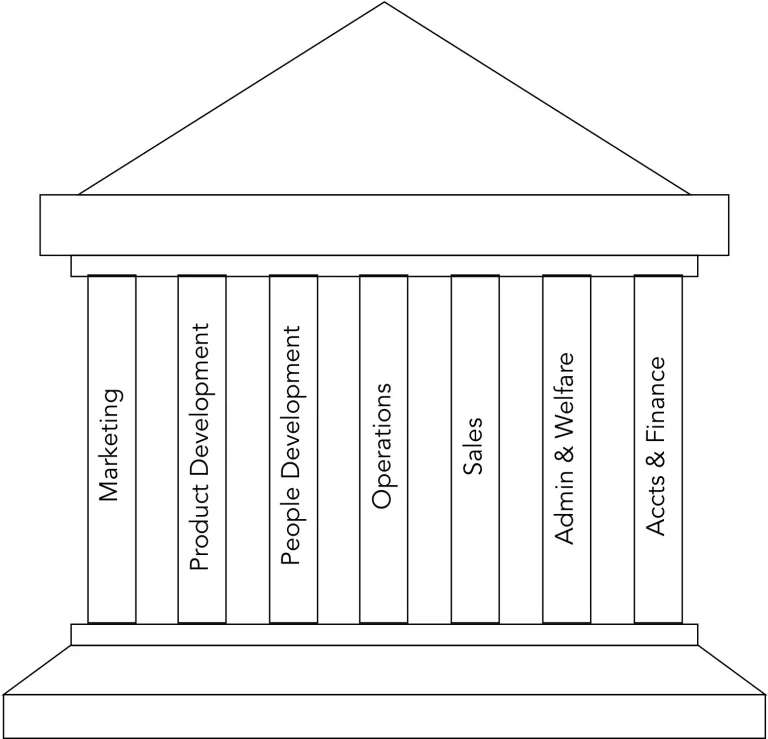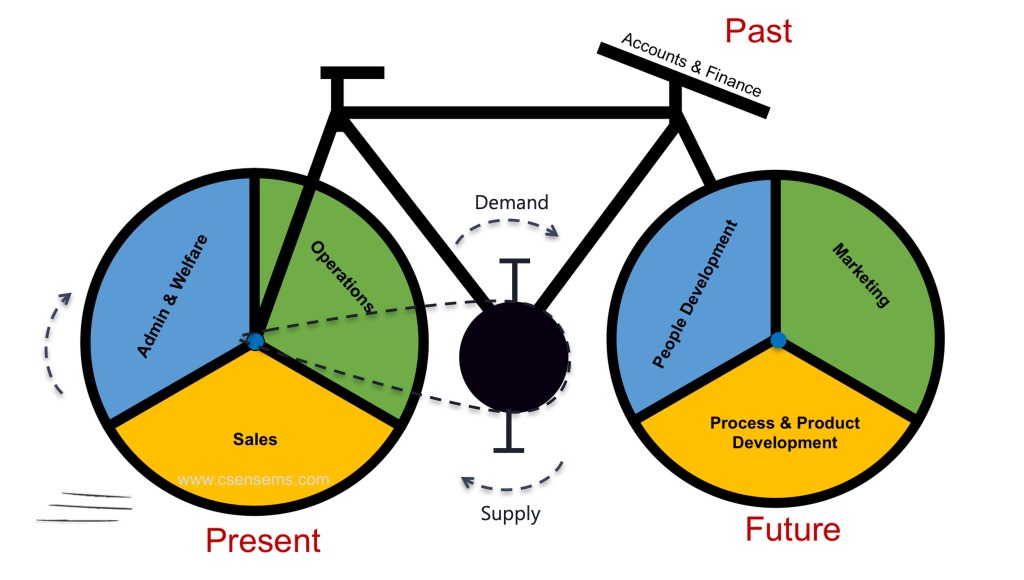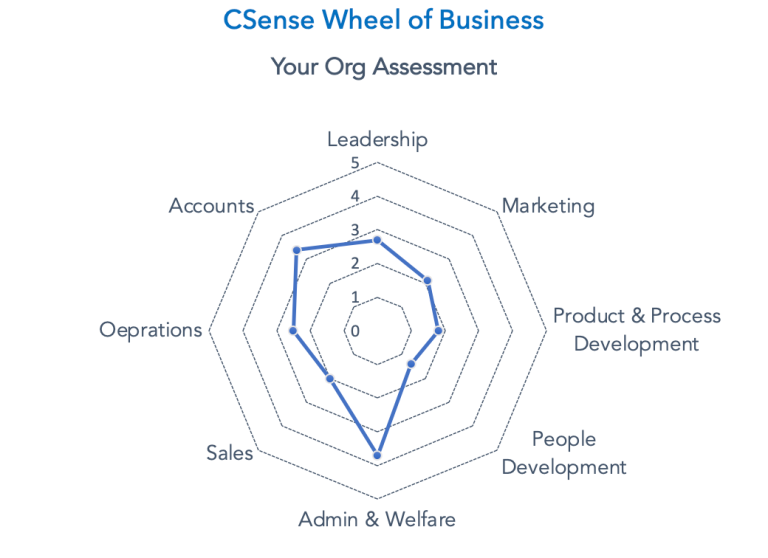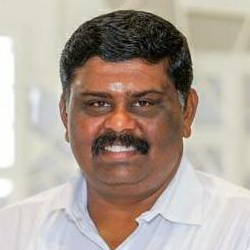Wheel of Business
The process of business in simple terms, starts with identifying the customers and their requirements in the area that is accessible to you. Once you identified their needs, you proceed to find or create a suitable solution for them and approach them. You create a set of processes to provide the solutions consistently. At the same time, you start procuring the resources, infrastructure, material and machinery.
You manufacture or stock or display your solutions, as per your business model. Then comes the most crucial step in the business - the sales and related activities. Finally, you collect money that consists of cover-up for expenses and your profits.
To continue this cycle of business, we need various departments in an organisation. The departments have to focus on effectiveness and efficiencies so that the organisation as a whole becomes acceptable to the customer and remains profitable.
But how many departments would suffice in a small business?
The Seven Pillars of the Organisation
I would recommend the following seven departments as a must-be department for any size of the organisation. I call them as seven pillars of a small business organisation.
Marketing department - To identify the potential markets and to sensitise the market about your products,
Process & product development - To design products as per customer requirements and to develop processes to improve the functioning of business processes continuously,
People development - To identify and recruit the right people into the organisation and continuously develop them to suit the market and organisational changes,
Operations - To procure the input materials, protect materials across the processes, manufacture the product as per design, despatching to the customer,
Sales - To attract the customer or to reach the customer and sell the products,
Admin & people welfare - To take care of the smooth functioning of processes by providing and protecting the infrastructure and facilities and to ensure the basic requirements of employees are met.
Accounts & finance - To manage the money.

Operations and sales departments vary from one company to another, depending on the industry they operate. For example – in a manufacturing company – the operations function may consist of departments like production, quality, maintenance, procurement, stores and logistics. Often a production manager can be the head of the operations department.
A Balanced Ride
I compare running an organisation with riding a bicycle. Imagine, there is a bicycle in front of you. There are three spokes in each wheel – the front-wheel consists of three spokes, namely, marketing, product and process development and people development.
The rear wheel has operations, sales and admin and welfare departments as its spokes. The accounts and finance department acts as the handlebar of the bicycle.

The bicycle analogy of an organisation
Thus, these seven departments would enable an organisation a fast and smooth ride towards its destination. For a smooth ride, all the spokes need to be of the same length. Similarly, the organisation needs equal prominence and importance to all seven departments for a successful journey towards its goals.
As a rider – an entrepreneur spending more time in one department and not focussing on others just based on his likes and dislikes would result in failures.
In some cases, you may also see companies that only focus on one wheel – working on marketing and product development and forgetting the operations and sales and vice versa. This is like pedalling the bicycle when one of the wheels tied to a post. Even after exhausting all your energy to pedal, the bike will stay in the same place – the organisation would stagnate.
A company that lacks the inputs and guidance from accounts & finance could not accomplish its goals. It is similar to a bicycle without a handlebar or a car without a steering wheel. It may move fast, but nobody knows where it is going, and the rider could not control its direction.
Wheel of Business – Self Assessment
Is your organisation designed to grow? Assess your company’s completeness and capability to grow using Wheel of Business – Assessment, below.
You will get the report in the form of a Radar Chart depicting department wise maturity scores.

















